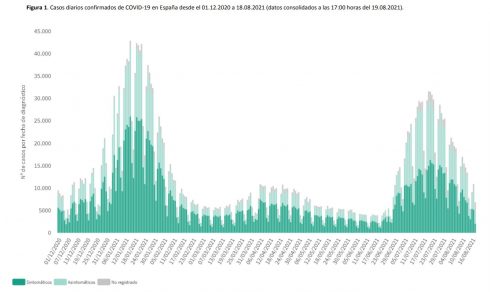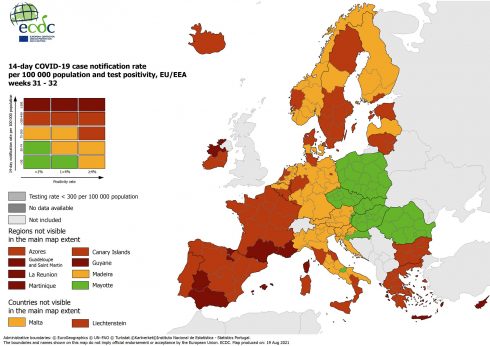CONSTANT changes to travel rules have caused uncertainty and a loss of confidence for those looking to book summer holidays in Spain.
Many are wary of planning a trip in case the rules change at the last minute.
Earlier this summer the Balearic Islands were downgraded from the green list to amber causing travellers to make last minute changes to flights to beat new restrictions or face quarantine when they return.
The whole of Spain, including the Balearic Islands and the Canary Islands are now on the amber list, which means no need to quarantine for travellers flying to the UK who can prove full immunity.
But with another review pending could they be downgraded to the red list?
Next review
Travel restrictions are updated every three weeks by the UK government and though there is often speculation, no-one really knows what changes will be until they are announced by Transport Minister Grant Shapps.
With the last review having taken place on Wednesday, August 4, the next travel update is due to take place on Wednesday, August 25.
An update from the Department for Transport states: ‘These regular review points will allow the Government to balance helping the public to understand Covid requirements when travelling to England while allowing us to constantly evaluate the risk for different countries.’
A few days notice is usually given for the travel update changes to come into force, which typically occurs during the night of the following Sunday.
This means new restrictions could be in place from Sunday August 29, right in the middle of the UK’s August bank holiday.
How likely is Spain to be moved from the amber list?
Well, the good news is that health data shows Spain is seeing a drop in its Covid-19 infection rate.
The latest data from Spain’s Health Ministry shows that the cumulative rate of destination’s latest figures show 360.56 cases of coronavirus per 100,000 people, down from 483 cases per 100,000 a week earlier.

The UK’s rate currently stands at 604.9 cases per 100,000 over a 14 day period.
According to Robert Boyle, former director of strategy at IAG, between July 22 and August 11 only 1.7 per cent of those returning to Britain from Spain tested positive for Covid-19, down from 3.1 per cent in the previous three weeks.
He therefore believes this means there is “no chance” of Spain being demoted to the red list.
This is backed up by the latest map from the EU Centre for Disease Prevention and Control.
The majority of the Spanish territory has moved from dark red into red in the latest edition of a map published weekly in support of the Council Recommendation on a mutual approach to the restriction of free movement in response to the COVID-19 pandemic.

While the map illustrates that infection rates in Spain are still among the highest in Europe, it also shows that it is safer to travel here than it was last week.
Currently, only four Spanish regions remain coloured in dark red and these are Andalucia, Extremadura, the Basque Country, and La Rioja.
The map is used as a guideline for EU countries to set their entry restrictions with advice that travellers from ‘dark red’ areas be required to take a pre-departure COVID-19 test and undergo quarantine upon arrival.
Updating the maps on August 19, the ECDC has noted that Spain is one of the few countries within the Schengen zone where infection rates are diminishing.
Germany, which last week was completely green, is now mainly yellow, with a few of its regions in red. Estonia has also gone from green into yellow, while its neighbour, Lithuania, has gone from yellow into completely red.
READ ALSO:
